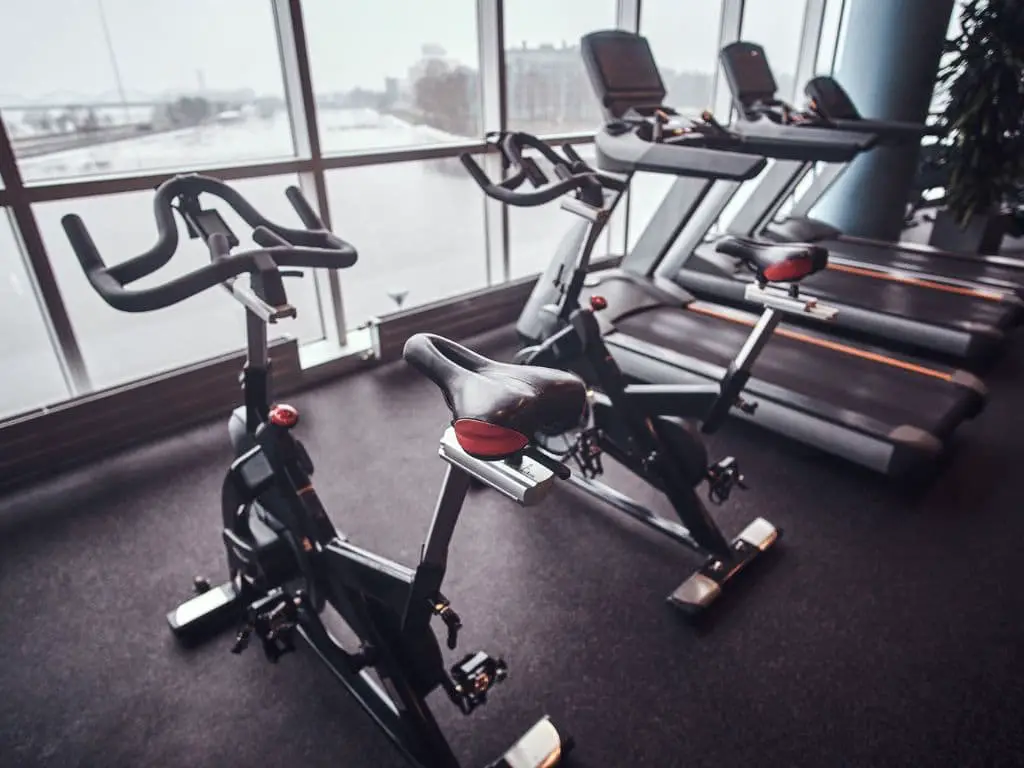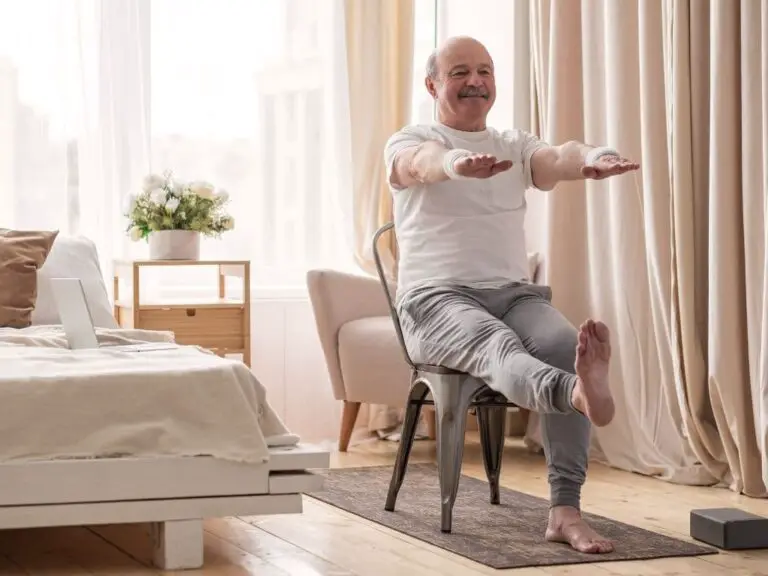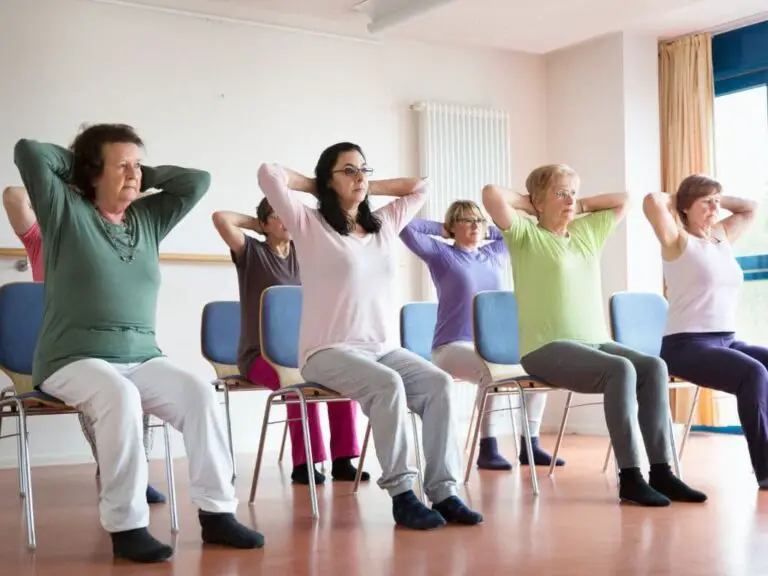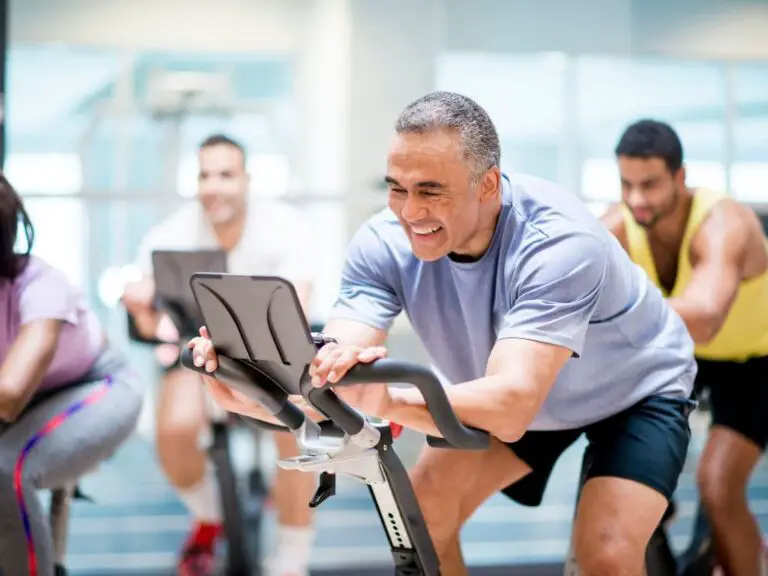Treadmill vs Stationary Bike for Seniors: Which is Better?
Staying physically active is vital for seniors to maintain their health, independence, and quality of life. Two of the most popular and effective home gym options for seniors are treadmills and stationary bikes. But which one is truly better suited for older adults?
The main difference between a treadmill and an exercise bike for seniors lies in the impact and safety. Treadmills offer a higher-impact workout that can improve cardiovascular health, aid weight loss, and enhance mobility but pose a risk of falls. In contrast, stationary bikes provide a low-impact, safer workout focusing on lower body strength and joint flexibility.
There are pros and cons to both low-impact exercise machines.

What Is a Treadmill?
A treadmill is a piece of cardio equipment that allows you to walk, jog, or run on an endless belt while staying in one place. Treadmills come with varying features such as adjustable speed and incline to increase the intensity of your workout. Many models also have handrails for stability and screens that display essential metrics like time, distance, pace, heart rate, and calories burned.
Treadmills provide an excellent way to perform aerobic exercise without harsh impacts on your joints. Their versatility enables users to customize their routine based on their fitness level and goals.
What Is a Stationary Bike?
Stationary or indoor cycling bikes look similar to regular bicycles but do not move. They consist of an adjustable seat, pedals, and handles that users push and pull against resistance to mimic biking motions. Stationary bikes allow users to cycle while remaining securely in place.
Like treadmills, stationary bikes also come with a range of features like varied resistance levels to increase intensity, screens showing speed, time, distance, calories burned, and heart rate. Most also have a weighted flywheel that provides fluid and smooth pedaling motion.
Stationary bikes provide a low impact cardio option focused mainly on strengthening the lower body and improving cardiovascular endurance. They are easier on the joints than many other cardio machines.
Benefits of Using a Treadmill for Seniors
Here are some of the top benefits seniors can gain from regular treadmill walking or running:
1. Improved Cardiovascular Health
One of the primary benefits of treadmill exercise for seniors is enhanced heart health. Using a treadmill has been shown to lower blood pressure, cholesterol, and risk of heart disease. Regular cardio on the treadmill can also increase stamina and endurance.
2. Weight Management
The combination of aerobic activity and calorie burning makes treadmills excellent tools for managing a healthy weight. Just 30 minutes of brisk walking on a treadmill can burn around 200 calories for a 160-pound person. Steady treadmill workouts assist seniors with shedding excess pounds and sustaining a healthy BMI long-term.
3. Enhanced Mobility and Balance
The controlled walking and running motions on a treadmill can improve seniors’ balance, gait, and mobility. Treadmills provide stable handrails that can assist with coordination. Slow speeds with slight incline are ideal for seniors focused on enhancing stability and mobility.
4. Strengthened Muscles and Bones
Regular treadmill use can build leg muscle strength and power. The impact of walking, jogging or running on a treadmill also stimulates bone density retention, reducing the risk of osteoporosis. Building lower body strength helps seniors stay active and mobile.
5. Mental Health Benefits
Aerobic exercise releases feel-good endorphins that enhance mood and reduce anxiety, stress, and depression. Staying active on a treadmill can boost self-esteem and cognitive function as well. The mental perks motivate seniors to persist with their exercise routine.
Benefits of Using a Stationary Bike for Seniors
Stationary bikes also offer a range of excellent benefits for older adults:
1. Low Impact Exercise
Cycling on a stationary bike provides a very low-impact cardio workout that is gentle on the joints. There is no harsh pounding as with running. The smooth spinning motions improve cardiovascular fitness without stressing the joints or risking injury. This makes stationary bikes ideal for seniors with arthritis, joint pain, or other orthopedic issues.
2. Improved Joint Flexibility
The pedaling motions enhance flexibility in the hips, knees, and ankles, keeping joints limber. Regular stationary biking can help seniors preserve their range of motion and mobility. This also helps prevent injuries.
3. Strengthened Lower Body Muscles
Stationary biking targets the quadriceps, hamstrings, glutes, calves and core muscles in the lower body. Working these large muscle groups improves strength and endurance. Building lower body power further aids seniors in staying active and retaining independence.
4. Enhanced Cardiovascular Fitness
Like treadmills, stationary bikes elevate the heart rate and offer an effective fat-burning cardio workout. Regular use reduces blood pressure and cholesterol for better heart health. Increased lung capacity and circulation are added boons.
5. Safe and Convenient
Stationary bikes are extremely safe workout options for older adults since there is no need to balance and control the bike. Hand grips provide stability as needed. Seniors also don’t have to go outside to cycle – they can conveniently get exercise at home. This makes sticking to a regular workout routine simpler.
Comparing the Risks: Treadmill vs Stationary Bike for Seniors
While both treadmills and stationary bikes are considered safe options for senior exercise, each does come with minor risks to weigh:
Treadmill Risks for Seniors:
- Falling off the treadmill if losing balance or coordination
- Stress injuries to hip, knees, ankles or feet from pounding motions
- Holding handrails too tightly can lead to wrist or shoulder pain
- Dizziness or lightheadedness is possible for those new to intense cardio
Stationary Bike Risks for Seniors:
- Saddle soreness is common if not properly positioned
- Lower back pain from poor posture or bike fit
- Pressure on nerves around the knees if not properly aligned
- Neck and upper back stiffness from stabilizing the upper body
Overall, stationary bikes tend to provide very low-impact exercise with less aggravation to joints and risk of falls. But treadmills offer more versatility for mixed routines. With some precautions, both can be safe, low-impact options for most seniors.
Here is a table comparing the key differences between treadmills and stationary bikes for seniors.
| Feature | Treadmill | Stationary Bike |
|---|---|---|
| Impact | Higher impact from walking/running motions | Very low impact from smooth spinning |
| Joint Health | Harder on joints like knees and hips | Extremely gentle on joints |
| Safety | Higher risk of slips and falls | Very low risk of falls or injury |
| Calorie Burn | Burns more calories per session | Burns moderately fewer calories |
| Muscle Focus | Full-body workout, with emphasis on legs | Works mainly lower body muscles |
| Cardio Benefits | Excellent for elevating heart rate | Also provides great cardiovascular benefits |
| Weight Loss Effects | More effective for losing weight | Helps with weight loss but to a lesser degree |
| Versatility | Allows for a range of speeds and inclines | Limited adjustments to resistance levels |
| Weight Support | Belt supports body weight | Must support all body weight on bike seat |
| Arm Involvement | Some arm motion involved | Works arms minimally |
| Convenience | Must stand and control speed | Seated position, just pedal |
Which is More Effective for Weight Loss: Treadmill or Stationary Bike?
If your main goal in using cardio equipment is shedding excess weight, treadmills tend to provide a more intense calorie burn.
Here is a table comparing the calorie burns for different treadmill and stationary bike workouts to show which is more effective for weight loss:
| Workout | Calories Burned (for 155lb person) |
|---|---|
| Treadmill walking at 3.5mph for 30 mins | 298 calories |
| Treadmill jogging at 5mph for 30 mins | 392 calories |
| Stationary biking at a moderate pace for 30 mins | 260 calories |
| Stationary biking at a vigorous pace for 30 mins | 312 calories |
As the table shows, the same person will burn significantly more calories using a treadmill compared to a stationary bike when workouts of the same duration and similar intensity levels are compared.
For example, a half hour session of moderate jogging on a treadmill burns over 130 more calories than moderate stationary biking. Even slow treadmill walking results in a slightly higher calorie burn than vigorous stationary biking.
So for seniors focused mainly on weight loss through cardio, treadmills provide a greater caloric expenditure overall in a given workout time. The same amount of time on a treadmill will burn more calories for most people. And intervals of running on a treadmill can further maximize fat burning.
However, stationary cycling is still an excellent low-impact cardio activity for seniors to aid weight loss. By pairing it with a healthy diet, seniors can successfully manage their weight with regular stationary bike workouts.
Which is Safer for Seniors: Treadmill or Stationary Bike?
From a safety standpoint, stationary bikes are typically the better choice for older adults, especially those who are prone to losing balance or have existing injuries. With a treadmill, there is more risk of slips, falls, and impact stress.
Stationary bikes provide a super stable form of exercise where users are securely seated. The smooth spinning motion avoids jarring the joints or risking a harmful spill. Stationary bikes are extremely gentle on the bones and muscles while still elevating the heart rate.
However, treadmills can also be a good option for mobile seniors who are not at high risk of falls or joint pains. Using caution by starting on low speeds with rail support can make treadmill walking reasonably safe for many. Consulting a doctor is wise to assess suitability and precautions.
How to Choose Between a Treadmill and a Stationary Bike as a Senior?
Seniors should consider the following factors when deciding between a treadmill or stationary bike for their home gym:
- Current fitness level and mobility
- Joint health and history of joint injuries
- Risk factors for falls or fractures
- Need for weight loss versus maintaining fitness
- Interest in enhancing cardiovascular health
- Whether variety in workouts is appealing
- Budget and available space
Setting fitness goals and priorities will help determine if a treadmill or stationary bike better matches your needs as a senior. Consulting a doctor or physical therapist can provide guidance as well. It is possible to utilize both for a well-rounded routine.
Conclusion
Both treadmills and stationary bikes can be excellent additions to a senior’s exercise routine for maintaining health and independence. Treadmills provide a versatile cardio workout that enhances heart health, aids weight loss, and improves mobility when used safely. Stationary bikes are ideal for very low-impact cardio that is gentle on the joints while still being an effective fat burner and strength builder.
For seniors at risk of falls or with orthopedic conditions, a stationary bike is generally the safer choice. But active, mobile seniors could benefit from the calorie burning and muscle building advantages of a treadmill as well. With proper precautions, equipment settings, and guidance from fitness professionals, most seniors can stay strong and healthy for years to come with a treadmill or stationary bike workout regimen tailored to their needs and abilities.
Frequently Asked Questions
-
Is it OK to ride a stationary bike everyday?
Yes, it is OK for seniors to ride a stationary bike every day. Stationary biking provides a low-impact cardiovascular workout that is gentle on the joints, improves joint flexibility, strengthens lower body muscles, and enhances heart health. However, it’s important to maintain proper posture and alignment to avoid potential discomfort or injury.
-
What is the best exercise bike for a 70 year old?
1. Best Overall Choice: Schwinn 270 Recumbent Exercise Bike. Not only is the Schwinn 270 a great recumbent bike for senior citizens, but it’s also great for those who are recovering from injury or have issues with their joints.
-
Are exercise bikes worth it?
A stationary bike can be a great way to lose calories and fat, strengthen your heart and lungs and increase muscle strength. A stationary bike is less stressful than other cardio equipment but still offers a great aerobic workout.
-
Is a stationary bike good for elderly?
Seniors can experience lower heart rate, better blood circulation, and lower blood pressure by regularly exercising. These factors, when combined, lower your risk of stroke and fatal heart disease.
-
What is better for seniors treadmill or exercise bike?
Camargo states that the exercise bike can be used by older people due to its ability to sit while still exerting energy. A traditional treadmill, on the other hand, is a better choice for those with mobility or injuries and who want a harder workout.
-
Is elliptical better than exercise bike?
A stationary bike can burn slightly more calories when used at higher intensity than an elliptical. This could make it a better option for people trying to lose weight. However, the elliptical helps to strengthen your upper and lower bodies.
-
Can you lose belly fat by riding a stationary bike?
Cycling can be a good way to lose belly fat. However, it takes time. Recent research has shown that regular cycling can help you lose weight and improve your overall health. Moderate-intensity aerobic exercise, such as indoor and outdoor cycling, can be used to reduce belly fat.
-
Which is better a exercise bike or treadmill?
You must consider how intense and long you train when comparing calories burned by stationary bikes and treadmills. Research suggests that stationary cycling can burn 7.9810.48 calories/minute while running on a treadmill is 8.1810.78 calories/minute ( 10).
-
What is the difference between an exercise bike and a spin bike?
Exercise bikes can be used for endurance training and should only be used in a sitting position. The spin bikes are more like traditional road bikes and can be used for custom workouts that include acceleration, coasting or other activities.
-
How long should seniors ride a stationary bike?
Talk to your doctor before you start any type of exercise or purchase an exercise bike. After you are cleared by your doctor, the best way to improve your health is to ride the bike for 20-30 minutes every day. To maintain a steady speed, you should aim to cycle at least 74 revolutions per hour.






